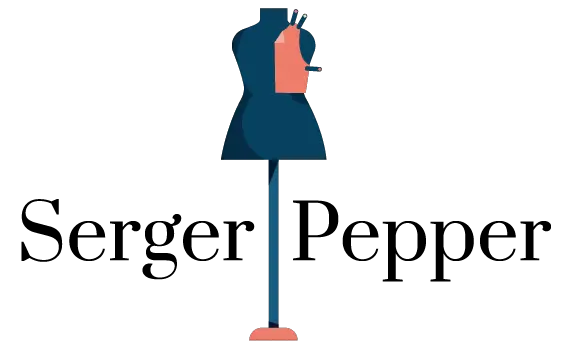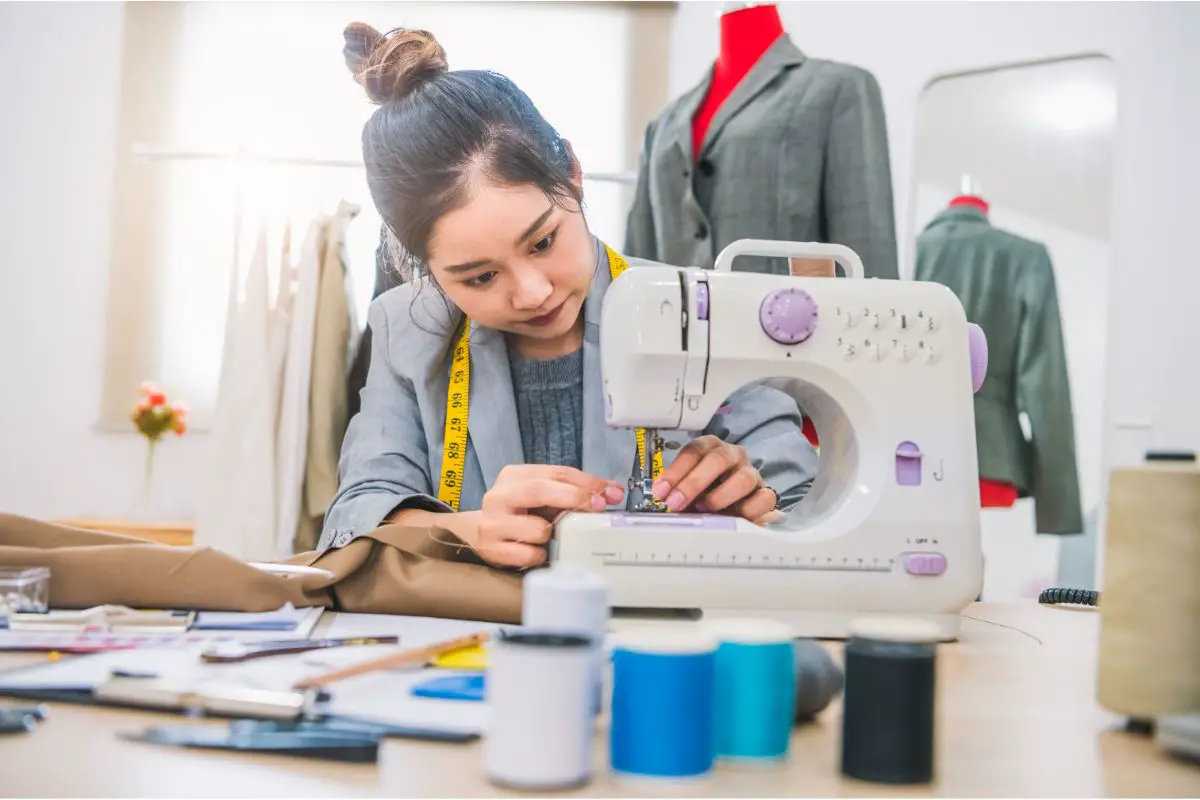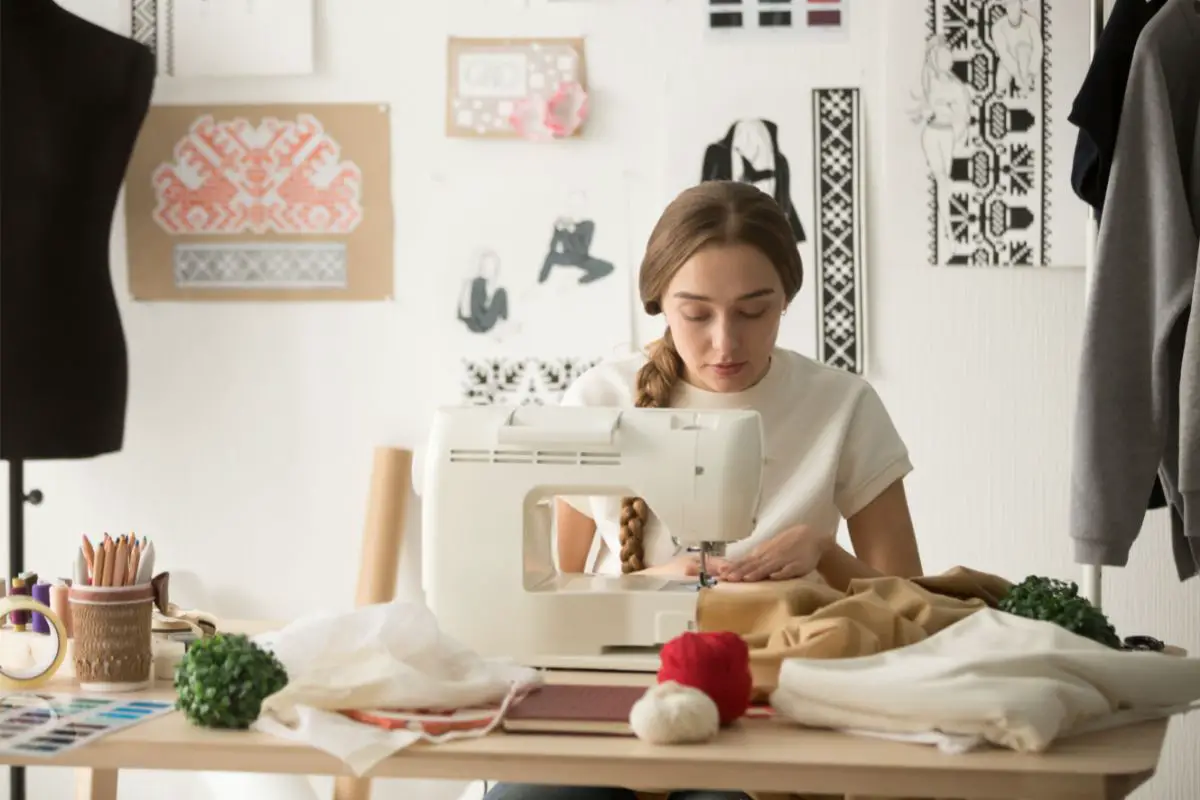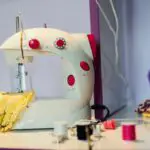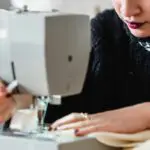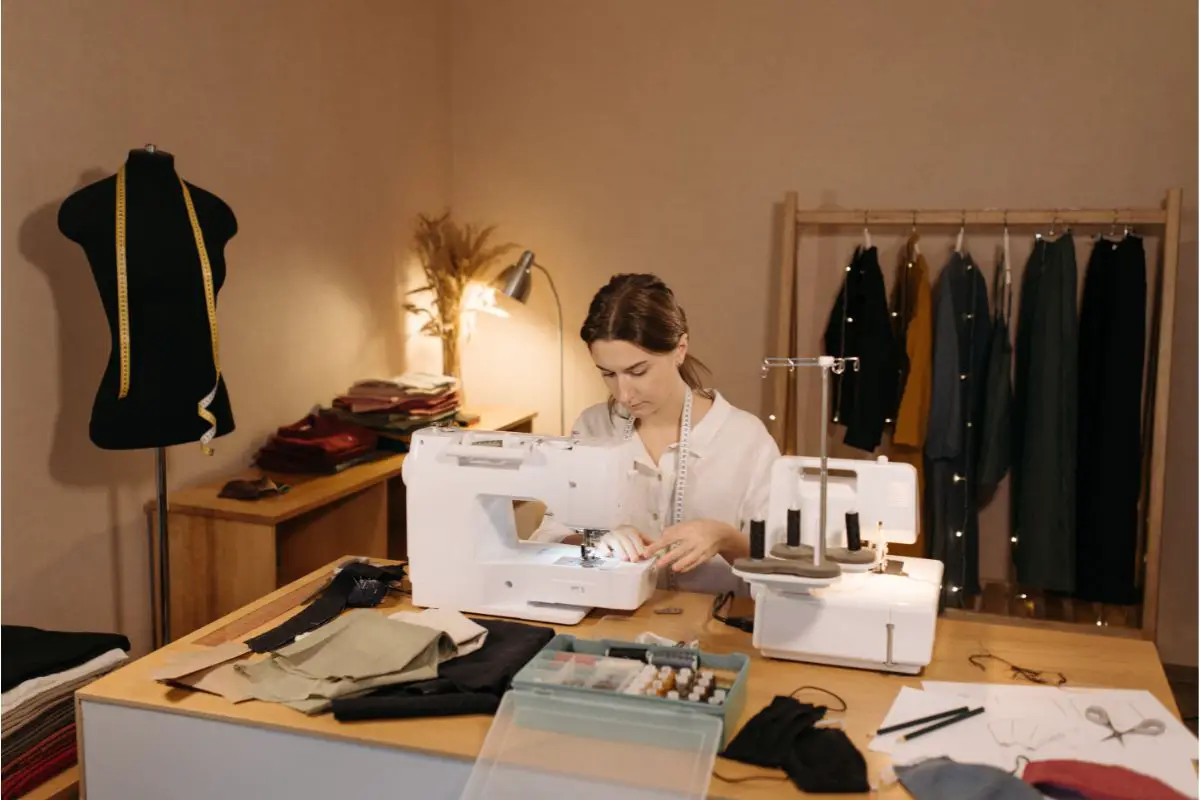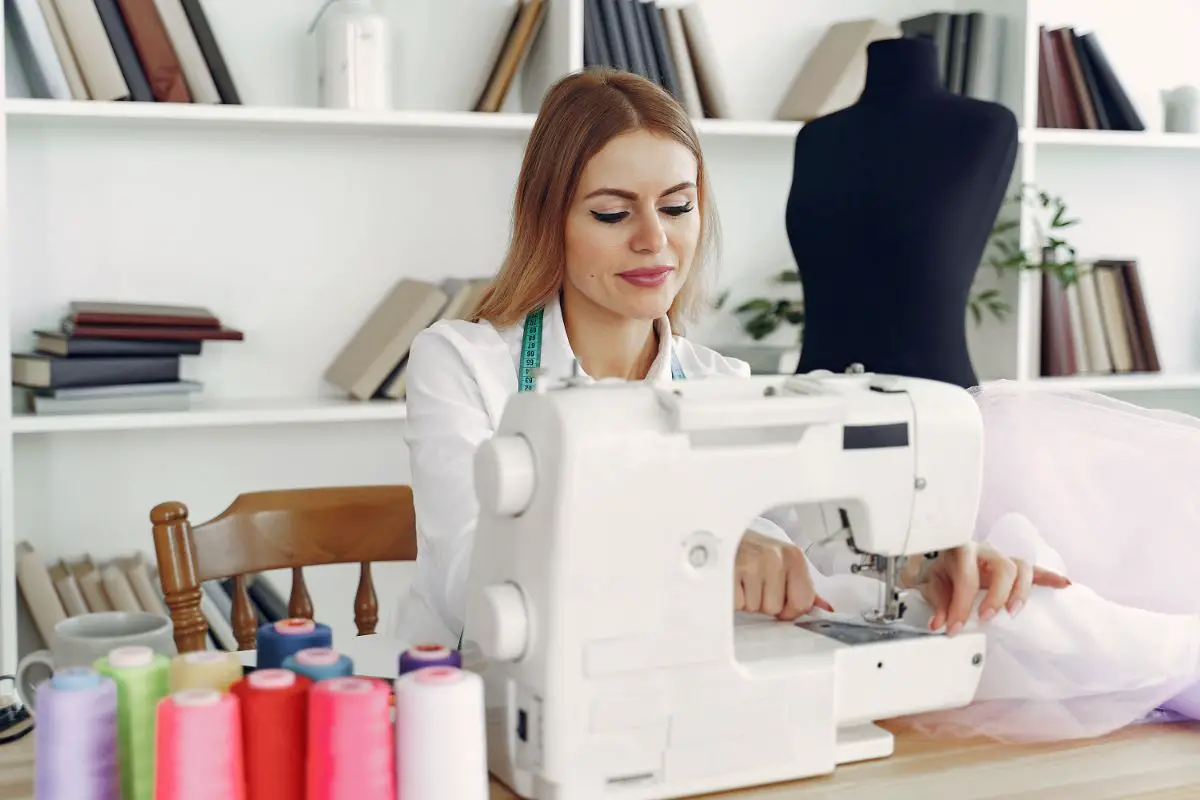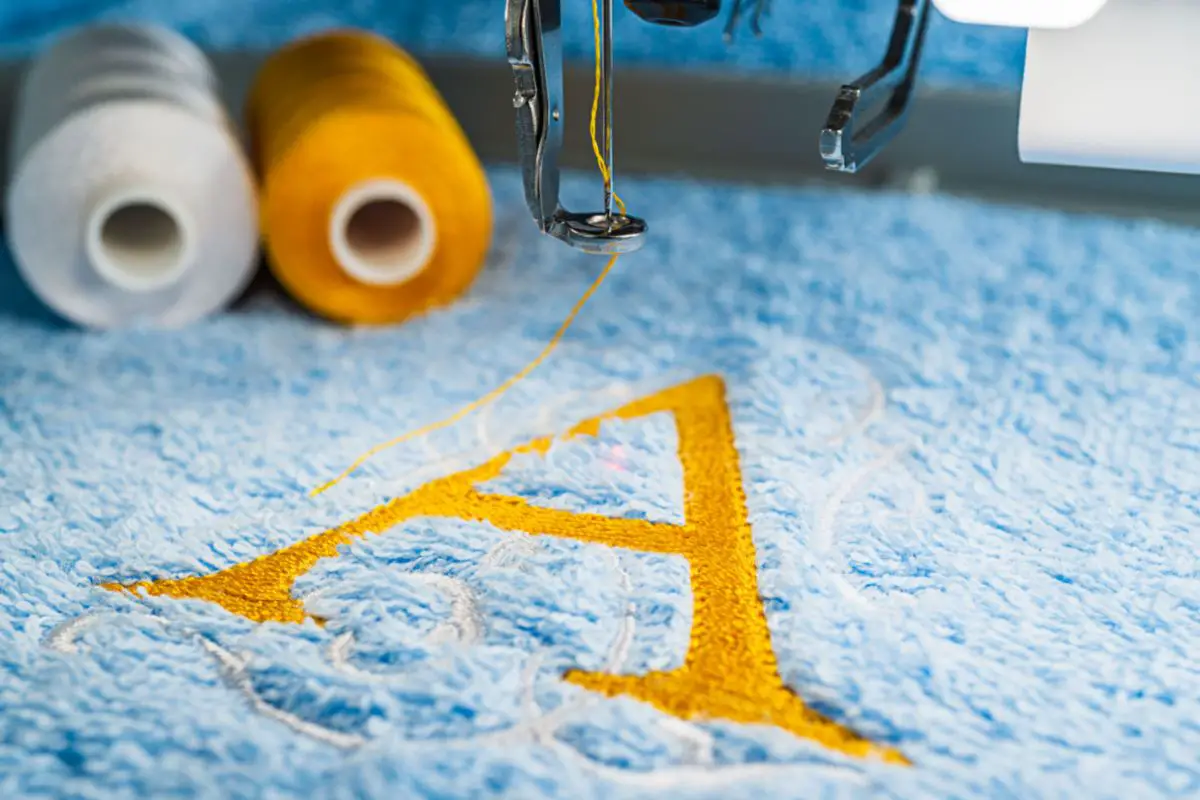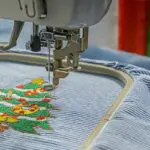Knitwear is becoming more popular but it can be difficult to sew by hand. That’s where your sewing machine or serger comes in.
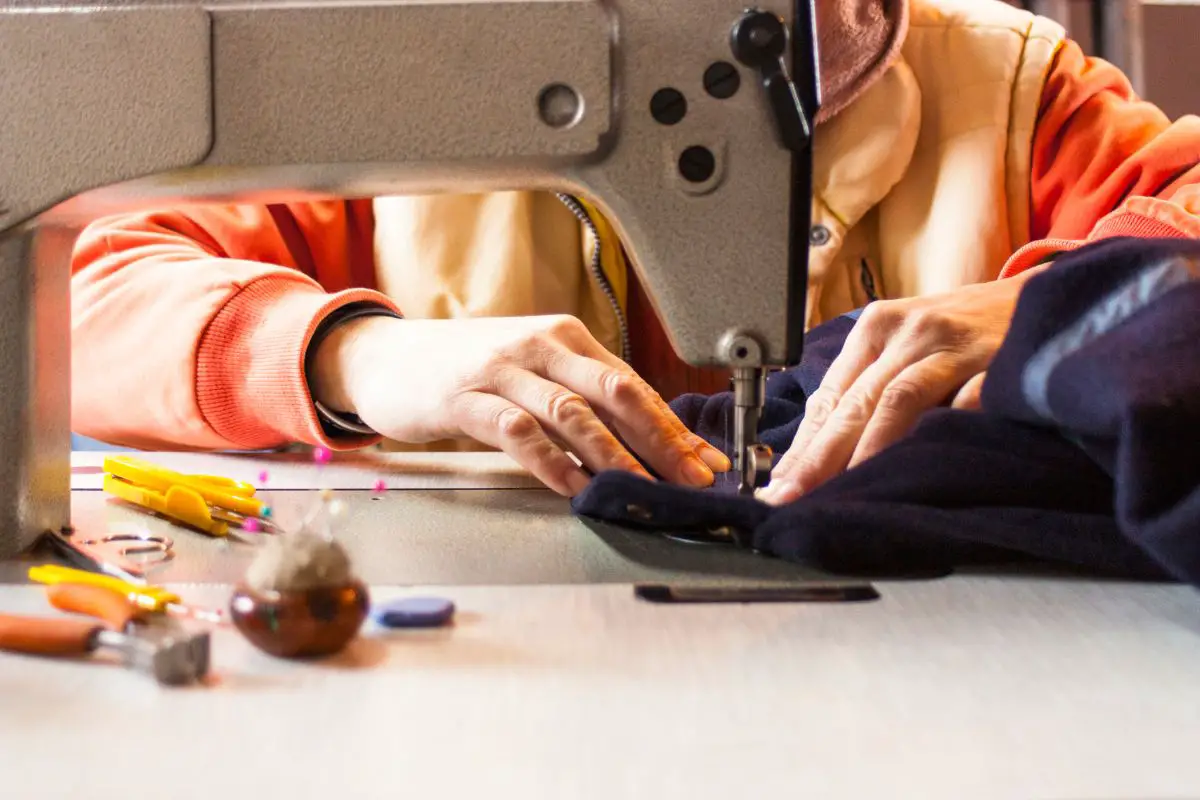
You can sew knits and knitted garments easily and quickly with these sewing tools. This being said, there are a few things you should look out for sewing knits.
Here is a list of our top tips for sewing knits with serger and sewing machine.
1. Find Out The Stretch Percentage
The stretch of your fabric can make a big difference to your knitted clothes. Most knits have some stretch to allow for better flexibility for the wearer.
In order to find out the stretch percentage, place one edge of your fabric next to a ruler. Hold the fabric on one end and mark 4” with your finger.
Then stretch the fabric and check if it returns to the original 4” mark. As a rough guide, a fabric stretching from 4” to 7” has around 85% stretch.
2. Use The Right Sewing Machine Needle
When sewing knits with a sewing machine, you need to use the right type of needle. You can choose between a bigger needle that is ideal for heavy fabrics or a smaller needle for lighter materials.
Some of the best needles for sewing knitwear are ball point needles, Jersey needles, stretch needles and stretch twin needles.
3. Reduce Your Sewing Machine’s Foot Pressure
A sewing machine foot can produce a lot of pressure on the fabric. This means that it stretches the fabric and you can end up with wavy material.
In order to avoid this effect, make sure to use a slightly lower foot pressure than normal.
Some sewing machines require you to lose a screw on the side, while others have a simple dial that allows you to adjust the sewing foot pressure.
4. Use A Rotary Cutter For Cutting
In order to get a neat and clean cut, it’s a good idea to use a cutting mat and a rotary cutter. This also allows to create curved pieces.
5. Practice Regularly
Sewing is a skill that requires regular practice. You don’t have to sew a big piece but just regularly work with your sewing machine and serger.
It’s also worth trying different types of stitches and garments to improve your sewing experience over time.
6. Work On A Long Table
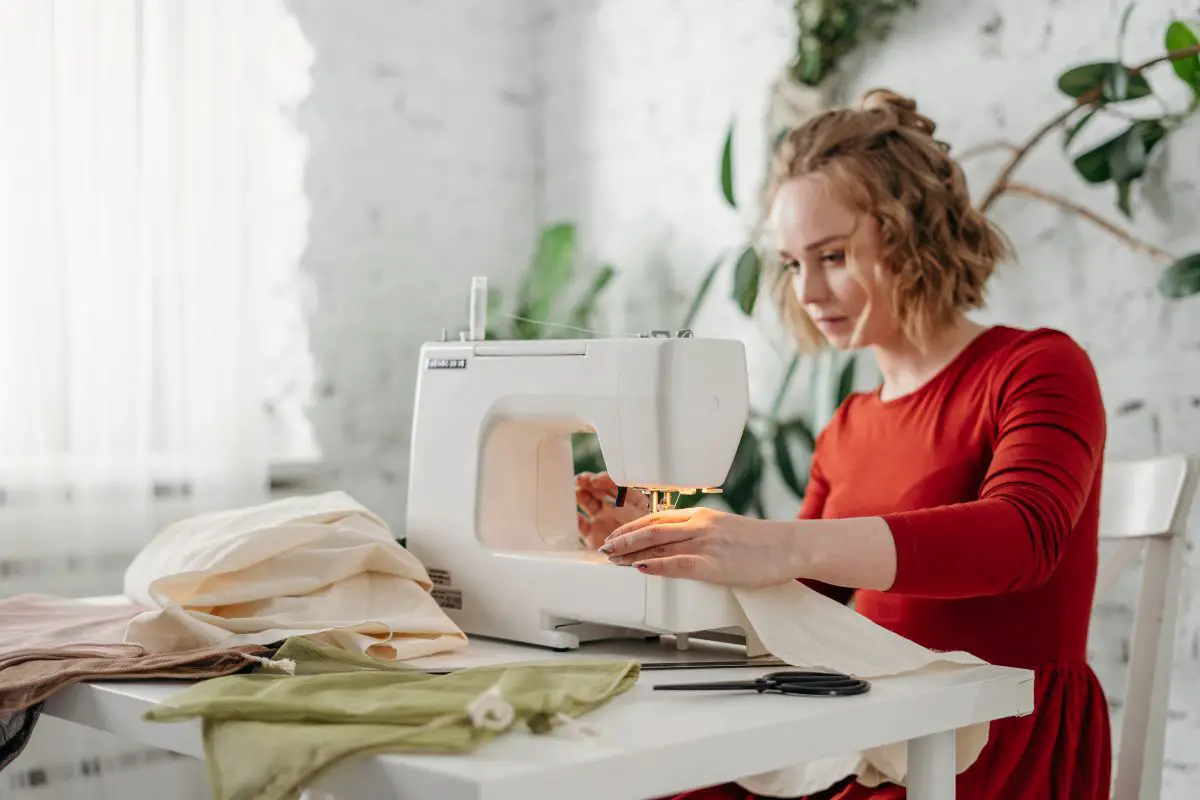
When sewing with knits, you need to make sure that your fabric lies flat. The best way to do this is by working on a long table that gives your fabric enough space.
7. Work With The Right Sewing Thread
Generally, cotton thread and polyester thread are two good options for knitted garments.
This being said, polyester can be too strong for some knit fabrics which can lead to holes in the fabric.
On the other hand, cotton isn’t as stretchy as polyester which may not be suitable for tight-fitting clothes.
8. Use Pattern Weights
Pattern weights are ideal when you want to create a neatly cut knit piece.
9. Use Stretch Stitch
As you need to use some stretchy fabric for your knit items, you will also use a stitch type that allows the piece of clothing to stretch for a little bit.
You should use either a serger stitch or zig-zag stitch
10. Don’t Stretch The Fabric
Pulling the fabric through the sewing machine or otherwise stretching your material too much can distort the shape of your fabric.
Make sure that you always place your fabric flat on a table, so it feeds it flat to the feed dog.
11. Use Spray Starch To Avoid Rolling Edges
Some stretch fabrics are so flexible that their edges roll up. In order to avoid this, you can stiffen the edges with some spray starch.
12. Use Tissue Paper To Prevent Wobbly Stitches
One of the most popular tricks in the sewing community is placing tissue paper between the fabric and the sewing machine’s foot to avoid wobbly stitches after sewing.
13. Add Clear Elastic For Stable Seams
If you want to stabilize your sewing seams, then reinforce them with clear elastic.
14. Press The Seams While Sewing
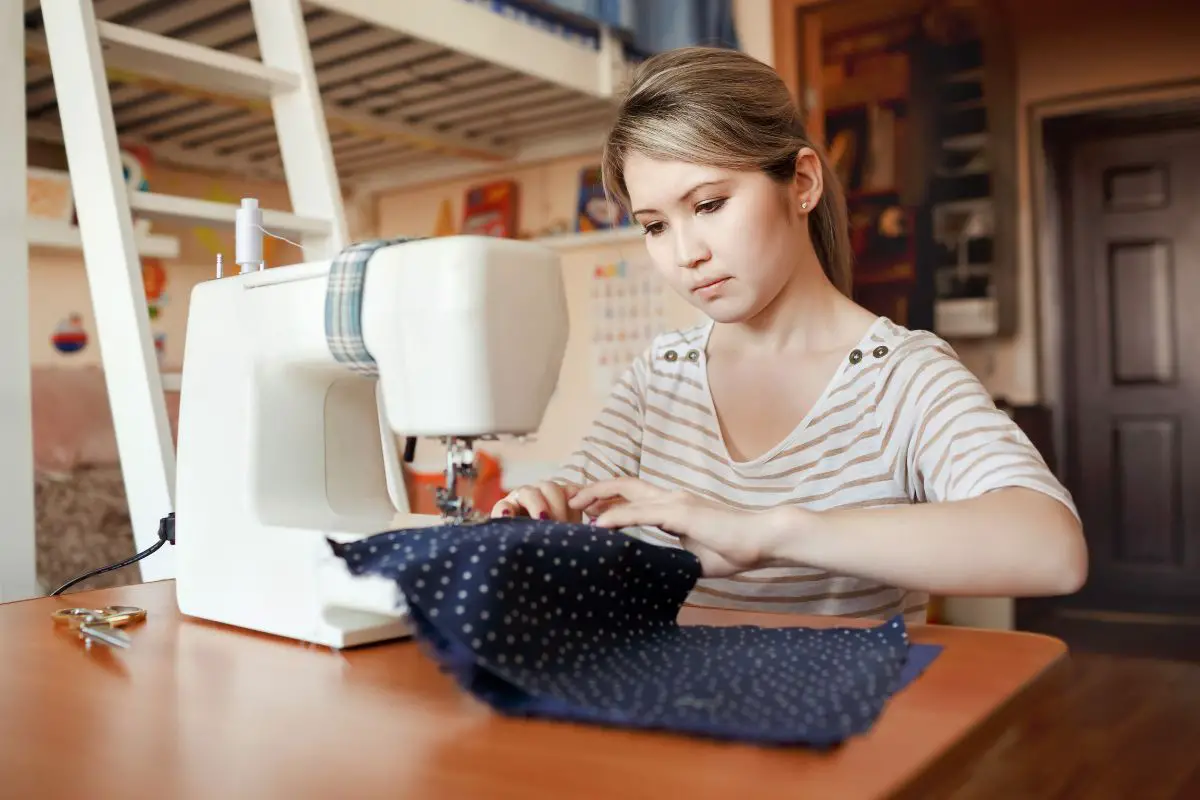
It’s a good idea to press every seam with some steam after you are done with sewing. The steam helps the fabric to return to its original shape.
15. Use Fine Pins
Standard pins typically fall off the normal knit fabric, so you may need to use fine pins that hold your fabric pieces together.
16. Sew Your Waistbands, Cuffs And Neckbands Smaller
In order to get the right size match with the rest of your garment, it’s good practice to make your cuffs, waistbands and neckbands between 75% and 85% smaller than the original pattern.
17. Hold The Thread When You Start Sewing
If you find that the fabric or thread is pulled into the bobbin area, then just hold the threads gently when you begin sewing (see also “Why Does Thread Keep Bunching Underneath My Fabric?“).
This should also prevent the fabric from being pulled which is a lot more gentle on the material’s shape.
18. Adjust The Tension
While you don’t usually need to change the tension of your sewing machine, it can help to adjust the tension by one up or down to avoid the stitches gathering or puckering.
Just make sure that you try it out on a sample piece before you start sewing your main knit project.
19. Use Soft Stretch Hem Tape
Knit hems are notoriously difficult to sew but it’s possible. Just use a soft stretch hem tape that prevents the thread from pulling out.
Alternatively, you can also sew a hem with a double row of stitches or a zig-zag stitch. However, you will need a double need for this.
Final Thoughts
Sewing knits with a sewing machine and serger isn’t very difficult. You will just need to look out for a few basic things.
A lot of our top tips for sewing knits can also be useful for sewing other fabrics and materials. If you want to make sure that you get it right, then just use a sample fabric piece first.
- How To Sew Fabrics Together - June 5, 2023
- How Many Stitches Per Inch? - June 5, 2023
- How Long Does It Take To Sew A Dress? - June 5, 2023
